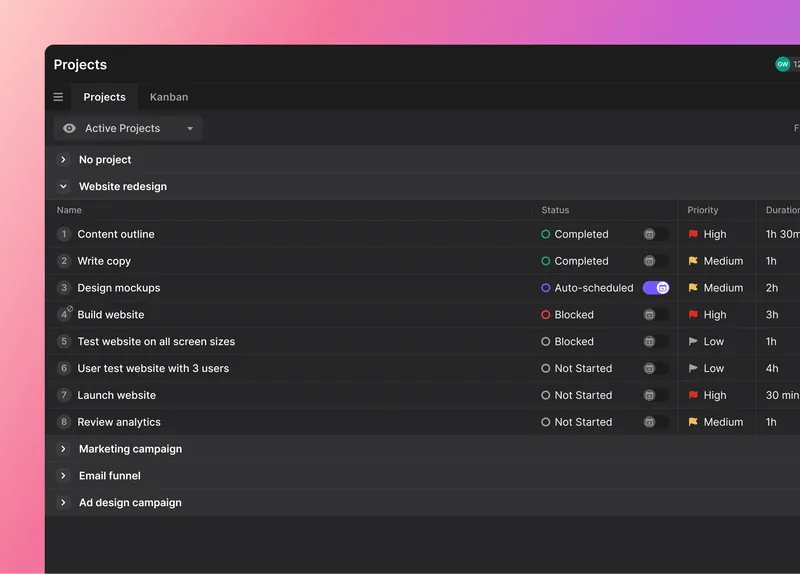Are you tired of struggling to manage your project timeline effectively? Do you find it difficult to complete projects on time and track progress?
Managing projects can be daunting, especially when it comes to keeping track of deadlines and project milestones. Fortunately, a well-planned project timeline can solve these problems.
A project timeline allows you to see the entire project at a glance, track progress, and stay on top of deadlines, ensuring goals are met and stakeholders are happy.
This article will delve into what a project timeline is, how it can benefit your project management process, and provide a step-by-step guide on creating a project timeline that works for you.
What is a project timeline?
A project timeline is a critical tool used in project management to help visualize and manage a project's progress from start to finish. It visualizes the tasks, deadlines, milestones, and dependencies involved in a project.
This tool is essential in planning, executing, and monitoring the progress of a project, as it helps keep team members accountable and on track.
A project timeline helps project managers and their teams stay organized and on top of deadlines. It can also be useful for communicating with stakeholders to ensure everyone is on the same page.
By providing a snapshot of the project's status, a timeline can help identify potential delays or issues, allowing project managers to take corrective actions promptly.
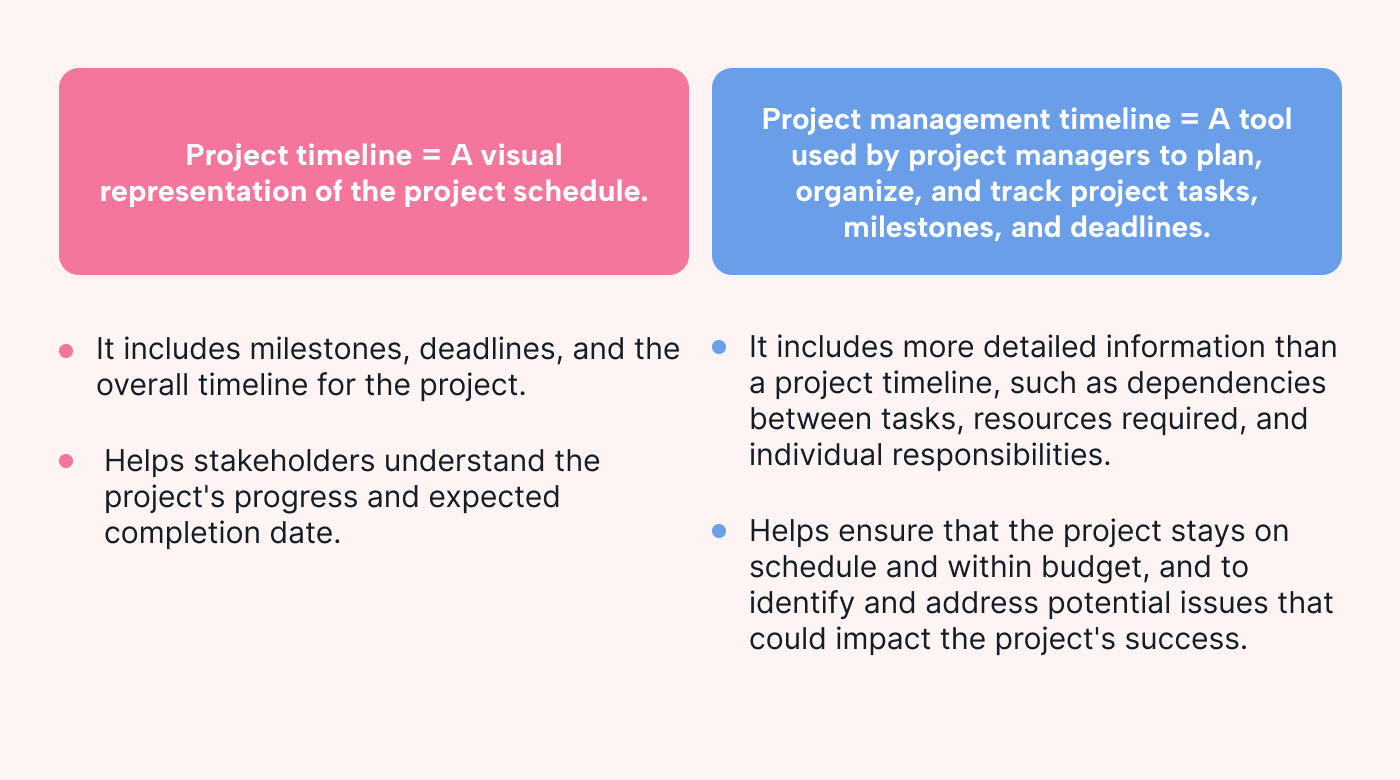 |
It is essential to note that there is only one significant difference between a project timeline and a project management timeline. While a project timeline visually represents everything just mentioned in a project, a project management timeline includes additional information on resource allocation, budget, and risk management.
Because of this difference, a project management timeline is a more comprehensive tool that helps project managers monitor and manage the resources and risks involved in a project. Project timelines also help identify a project's critical path. This path represents the series of tasks that must be completed on time for the project to be finished on schedule. The critical path allows project managers to focus on the most important tasks and allocate resources accordingly.
When to use a project timeline?
Project timelines are particularly useful in situations with multiple tasks and deadlines, complex projects, or projects with many stakeholders. In these scenarios, a timeline can help keep everyone on track and ensure the project is completed on time and within budget.
For example, a construction project may involve multiple teams, subcontractors, and stakeholders, each with their own tasks and deadlines. A project timeline can help keep everyone coordinated and ensure the project is completed on time and within budget.
Similarly, a marketing campaign may involve multiple teams, tasks, and deadlines, including content creation, social media marketing, email marketing, and analytics. A project timeline can help ensure all tasks are completed on time and the campaign launches successfully.
A project timeline can also be useful for complex projects that involve a high degree of coordination and planning.
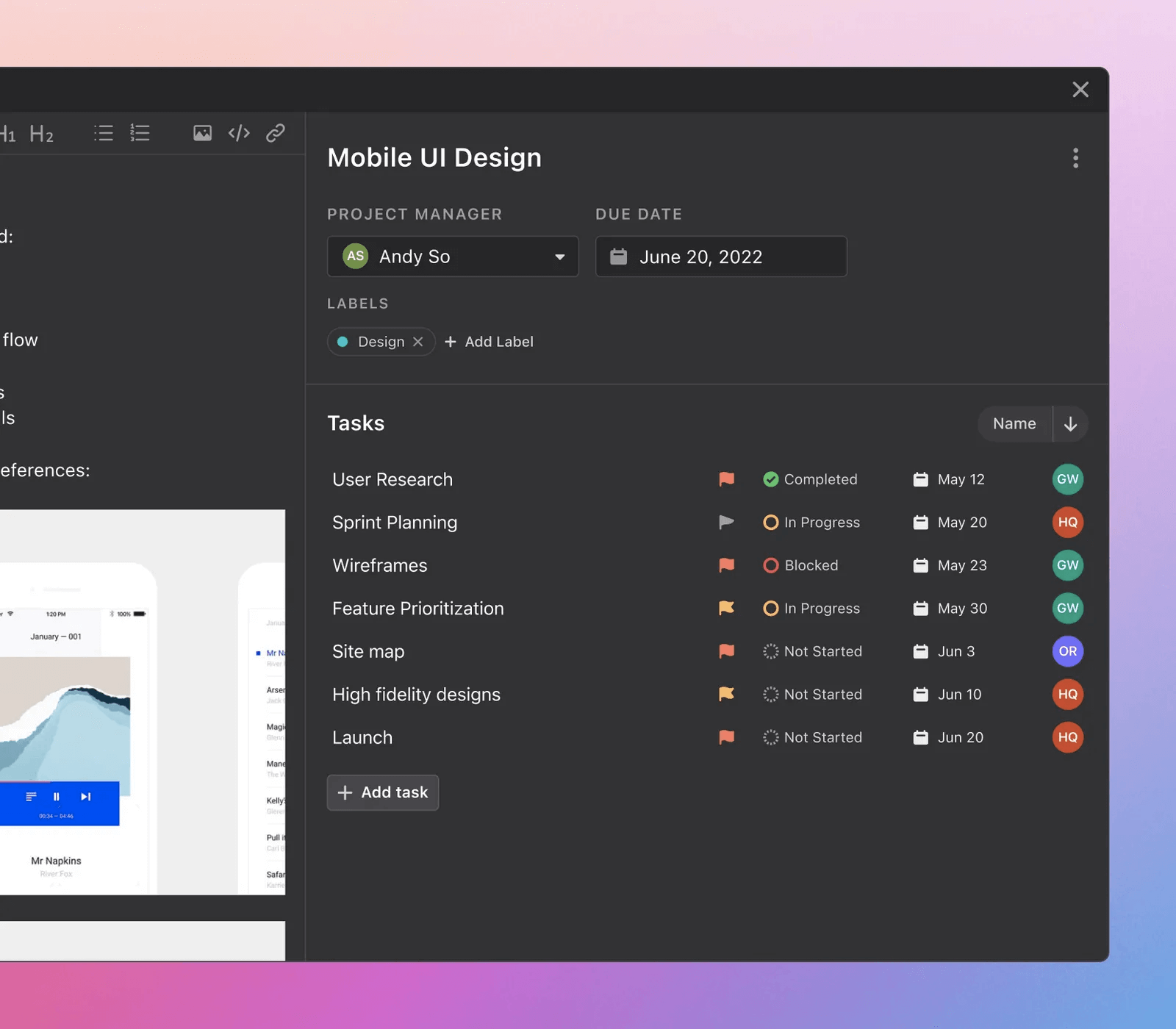 |
For example, a software development project may involve multiple teams, tasks, deadlines, and dependencies between different project parts, so implementing a timeline here is critical. A project timeline can help ensure all tasks are completed on time, and the project is delivered successfully.
How to create a project timeline: step by step
Creating a project timeline is an essential step for a successful project.
To help do this, we can break down the project into smaller tasks and build a timeline, which ensures that you plan and manage your projects effectively.
In this section, we will go through the step-by-step process of creating a project timeline, from defining the project scope to monitoring and updating the timeline throughout the project.
Below is a quick summary of each step before we dive deeper into each one.
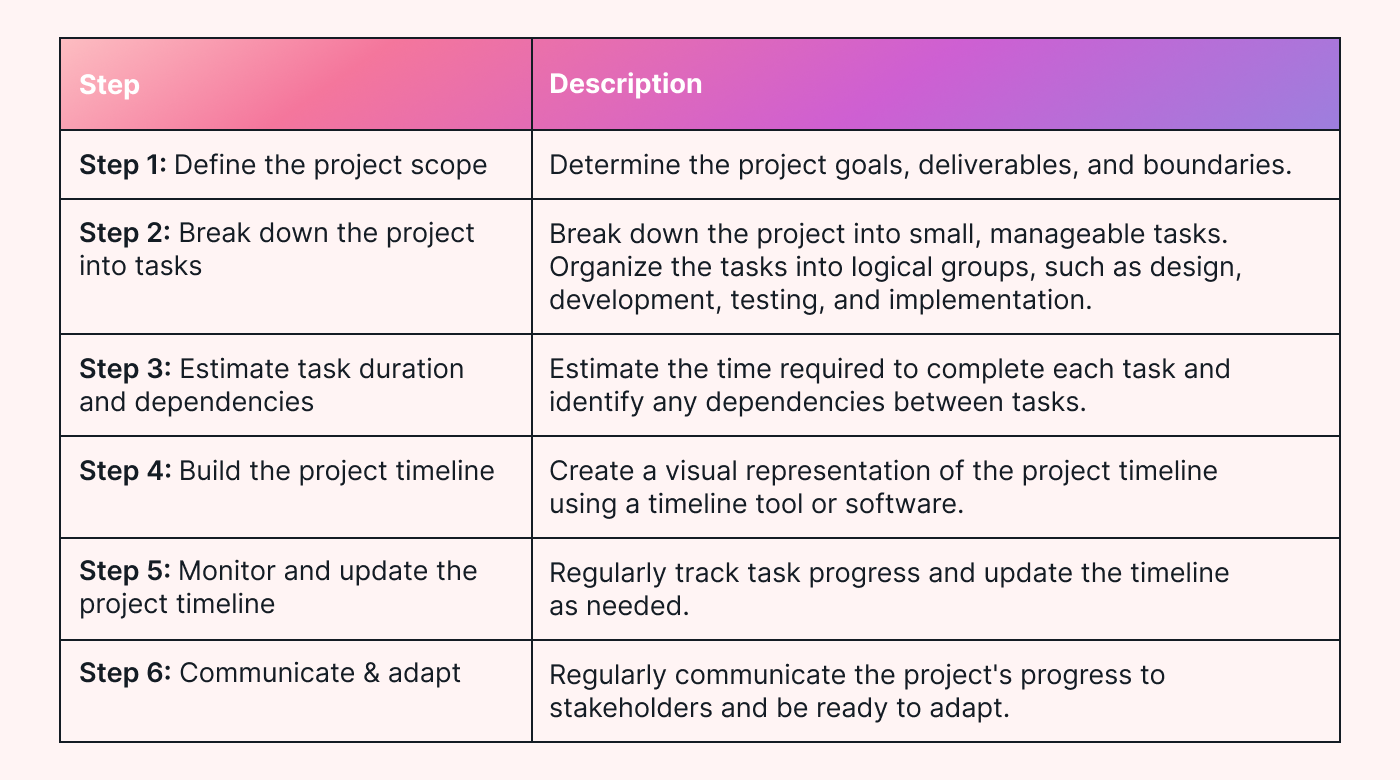 |
Step 1: Define the project scope
Defining the project scope involves identifying the boundaries and objectives of the project to ensure that everyone involved understands the factors to complete the project successfully.
This step is crucial for setting realistic and achievable goals and avoiding scope creep (overstepping the boundaries), which can lead to project delays and increased costs.
It is essential to clearly understand the project requirements, goals, and constraints to define the project scope and objectives.
One approach to defining the project scope is to use a scope statement that outlines the project's objectives, deliverables, and key milestones. This statement should be specific, measurable, achievable, relevant, and time-bound (SMART).
For example, suppose the project is to develop a new software application. In that case, the scope statement should include the application's specific features, the target market, and the project timeline.
Step 2: Break down the project into tasks
To create a project timeline successfully, it is best to ensure that all the tasks are accounted for and can be completed within the given timeline.
One effective way to do this is to gather all project stakeholders and project team members involved in the project and brainstorm all the necessary tasks required to complete it. This way, you get more details and ensure everyone feels ownership in the project. Including stakeholders in the process also improves communication, performance, and work culture.
Breaking down a project into smaller, more detailed tasks can be helpful. For example, consider something as simple as getting an oil change. What might seem like a single task can actually be several (smaller) tasks:
- Finding a shop.
- Discussing what you need.
- Negotiating how much it will cost.
- Driving your car to and from the shop.
Step 3: Estimate task duration and dependencies
When estimating the duration of each task, it is important to consider the complexity of the task, available resources, and the team's capabilities.
One helpful approach is to use historical data from previous projects to provide a more accurate estimate. Additionally, involving the team in the estimation process can help to build trust and empathy.
For example, consider a project to build a new website. Estimating the duration of tasks could involve breaking down the project into smaller tasks. These could be creating wireframes, designing the user interface, and writing code. Then, the team can estimate how long each task will take based on their experience and skill level.
 |
Identifying task dependencies and creating a sequence of tasks is also important. This means determining which tasks must be completed before others can start. For example, the user interface design must be completed before writing code.
Using a tool such as a Gantt chart can help to visualize the estimated duration of each task and its dependencies, allowing for a more accurate project timeline.
Step 4: Build the project timeline
Now that you have defined the scope and broken down the project into tasks, estimated task durations, and dependencies, it's time to build the project timeline.
Various tools and methods are available to help you create a project timeline, including Gantt charts and project management software. These tools can help you visualize the project timeline, track progress, and communicate with stakeholders.
Some of the best tools for visualizing project timelines include:
- Gantt charts: a bar chart that illustrates a project schedule, showing start and end dates, dependencies, and milestones.
- Kanban boards: a visual board that helps manage workflows and prioritize tasks in a project.
- Timeline software: software that provides a graphical representation of project schedules and deadlines.
- Mind maps: a diagram used to visually organize information and show the relationships between ideas in a project.
- Flowcharts: a diagram representing a process or system, often used to visualize the flow of tasks in a project.
Motion offers a user-friendly project management platform that simplifies the process of building a project timeline. With this platform, you can easily visualize and adjust your project timeline with one of its many Agile tools, assign tasks and deadlines, and monitor progress.
Step 5: Monitor and update the project timeline
By keeping a close eye on the timeline, you can identify delays or changes to the project plan and address them promptly. It's important to communicate these changes to all stakeholders and adjust the timeline accordingly.
One effective way to monitor the timeline is to use project management software that allows for real-time updates and collaboration. Other useful methods include regular check-ins with team members and holding project status meetings.
For example, if a task takes longer than expected, the project timeline must be adjusted to reflect the delay, and the team must work together to ensure the project stays on track.
Some may choose to monitor and update their project timeline using traditional methods, such as pen and paper or Microsoft Excel spreadsheets. While these methods may be effective for smaller projects, they can become cumbersome and prone to error as the project grows.
It's important to find a method that works best for your team and project needs.
Step 6: Communicate & adapt
Communicating the project timeline to all stakeholders is essential to ensure everyone is on the same page. Keeping the timeline easily accessible to all stakeholders also helps maintain transparency.
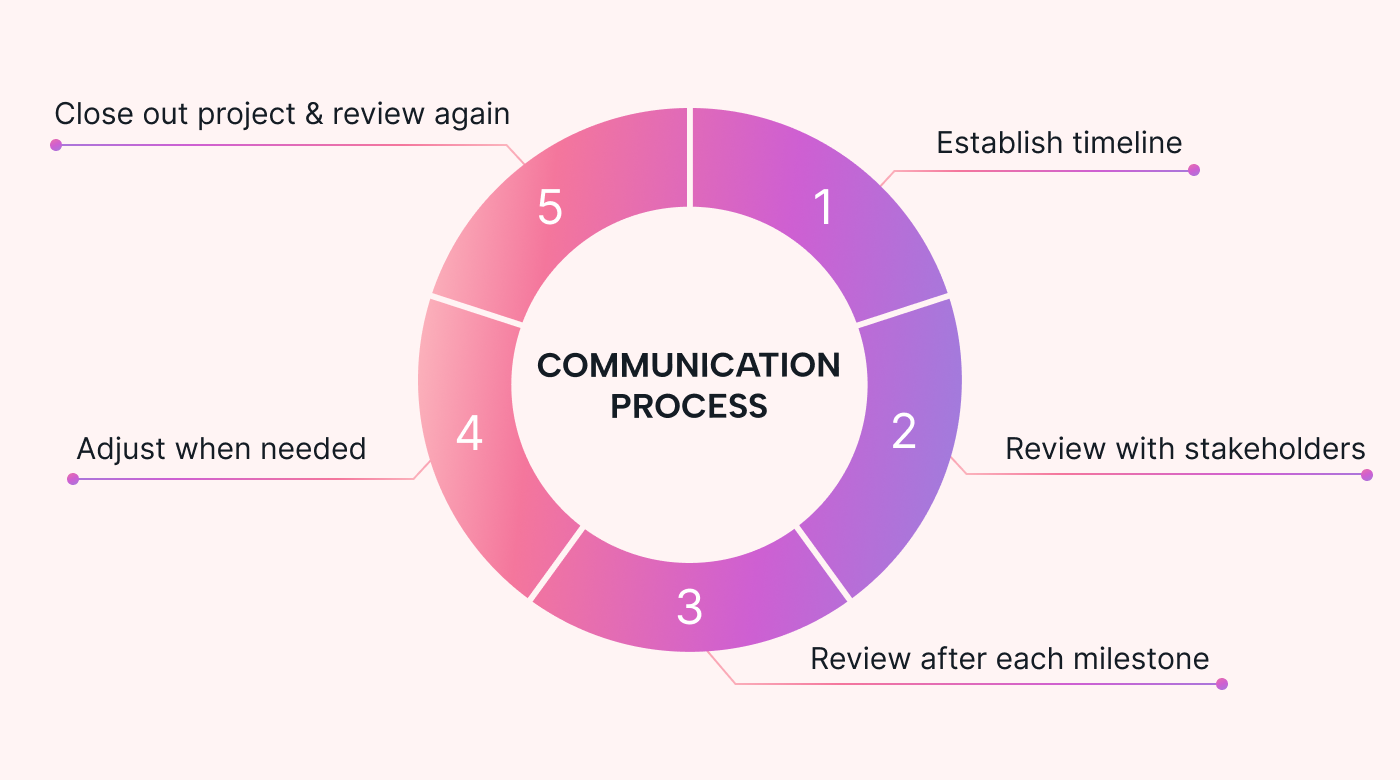 |
The best time to communicate is throughout the whole project. Effective communication also includes regular updates and addressing any concerns or questions rigorously.
In addition, it's important to tailor communication methods to individual stakeholders' preferences and needs. Some stakeholders prefer in-person meetings or phone calls, while others prefer email or instant messaging.
Lastly, it is essential to be adaptable and open to changes, similar to the Agile methodology. Flexibility and willingness to adjust the timeline can help ensure the project's success.
How Motion can help manage your project timeline
Motion is a powerful project management tool that can help you manage your project timeline more efficiently.
 |
Motion helps you visualize your project timeline, identify task dependencies, and easily make adjustments as needed. Plus, with Motion's collaborative features, you can easily communicate with your team and stakeholders to ensure everyone is on the same page.
With Motion, you can easily manage task dependencies by scheduling them in the right order. This ensures that tasks are completed in a logical sequence, with each subsequent task being dependent on the completion of the previous one.
Another benefit to using Motion is that it allows you to track your project's progress in real-time. This means you can quickly identify any issues or delays and take action to get your project back on track.
Build your next project timeline with Motion
You can ensure project success by breaking down the project into manageable tasks and creating a project timeline. These steps are crucial for ensuring project success and keeping your team on track, so make sure that you apply them to your next timeline.
To help streamline your project management, consider using Motion—a powerful AI assistant that simplifies the process of creating and managing project timelines. With Motion, you can easily track progress, identify potential delays, monitor dependencies and collaborate seamlessly with your team.
Don't let project management become a hassle—take control of your projects with Motion. Try Motion for free today and experience the benefits of streamlined project management.


